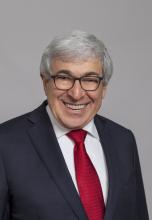Sponsored content
Looking at the arc of history, gender equality has always been elusive, in part because those with the power to make change are least likely to perceive a problem or, absent external forces, feel pressured to rapidly make changes. Without diminishing important progress made thus far, much work remains to bridge the still-wide gender equality gap.
Consider recent study findings on gender equality in the US from Equileap, which assessed more than 3,500 companies globally on 19 criteria including gender balance, the gender pay gap, paid parental leave and anti-sexual-harassment policies. Based on these criteria, the average gender equality score of the S&P 500 companies in 2020 was 39 percent, an improvement from the 34 percent average in 2019. Overall, US companies are working toward achieving gender balance with an average of 40 percent female employees and 60 percent male employees, but at board, executive and management levels, gender balance drops to below 30 percent female representation.
As with most complex issues, the solution is not simple and requires the commitment of all segments of society working together to achieve a common goal. So what concrete steps can we take right now to meaningfully advance gender equality?
At Henry Schein, we have initiated several key actions focused on closing the gender equality gap. For example, we committed to Paradigm for Parity (P4P) several years ago and will strive to achieve gender parity in our management team by 2030. Importantly, we share quarterly progress reports with our management team as we work toward this goal.
We identified internal executive sponsors to further advance our diversity & inclusion (D&I) efforts and have expanded our mentorship program to support rising Team Schein Members (TSMs). We have assessed and expanded our flexible work policies and practices to enable TSMs to have greater flexibility and achieve a more sustainable work-life balance. For example, we have implemented a more generous paid parental leave program to provide more time and greater flexibility to women and men alike. We are also raising awareness around unconscious bias throughout our organization in a variety of ways, including educational sessions, roundtables and a hiring toolkit for managers.
Beyond the P4P initiative, we frequently host roundtable discussions with female TSMs and members of our leadership team to better understand challenges that women in our company face. Our first of five employee resource groups was our Women’s Leadership Network (WLN), created in 2017 to further the development of female leaders in the organization, and we support TSMs around the world in launching their own local WLN chapters.
In 2020 we established the Diversity & Inclusion Council – with engagement from our board of directors – to develop strategies for building upon our existing inclusion philosophy. Our board is actively engaged in our gender equality efforts through its ongoing support of WLN and D&I and will remain a key source of guidance and counsel as our work continues. For example, with the board’s support, we implemented new D&I goals for all global directors and vice presidents and we assess performance on those factors when determining individual short-term incentive bonuses.
We also are evaluating pay equity as it aligns with our commitment to creating gender parity. Equity across an organization indicates how a company values each person and his/her contributions, regardless of gender, race or ethnicity. Equal opportunities for advancement are also a critical component of equity, which is an area of focus in our recruitment, talent planning and promotion processes, and we actively engage in equity conversations with our leaders.
Finally, we are committed to advancing D&I in the healthcare professions that we serve through our support of the American Dental Association’s Institute for Diversity in Leadership, the National Dental Association, the National Medical Association, the Hispanic Dental Association, the Society of American Indian Dentists and other groups, including our work with the World Health Organization, World Economic Forum and the Gold Foundation. We firmly believe this support is critical for two key reasons: first, healthcare professions are becoming more racially, ethnically and gender-diverse and second, patients are more likely to trust and seek care from a culturally competent healthcare provider from their own community.
Bridging the gender equality gap – as well as the other gaps that exist in our society – is a complex challenge that requires sustained commitment and may seem frustratingly slow. It may even seem impossible at times. But we should remember these wise words from former South African president Nelson Mandela: ‘It only seems impossible until it’s done.’










